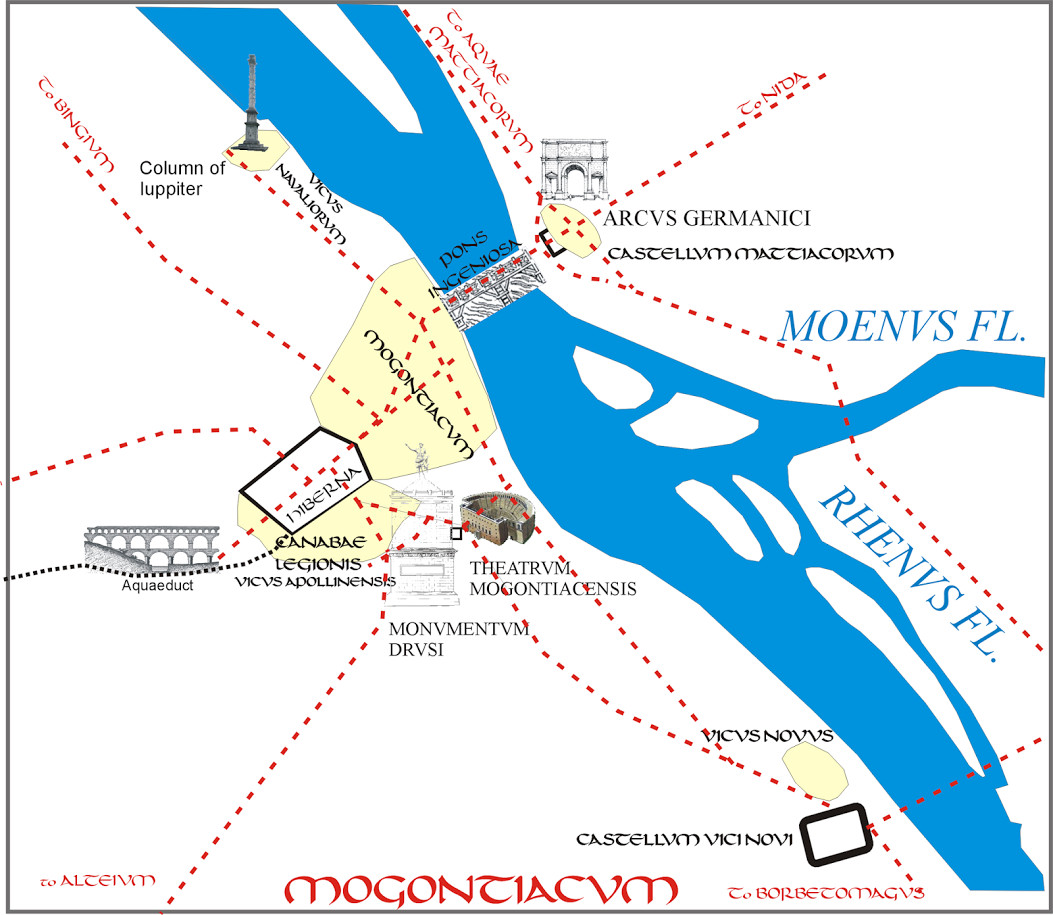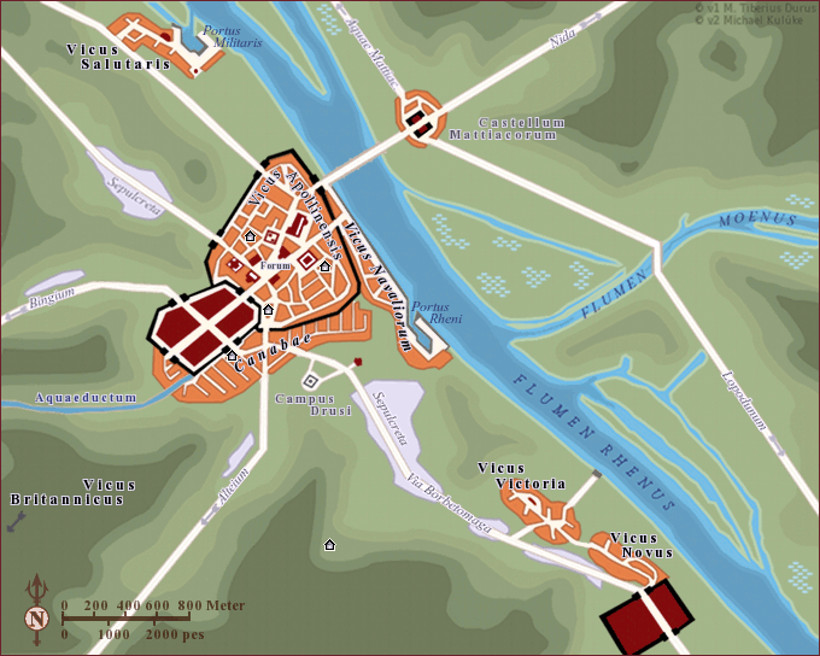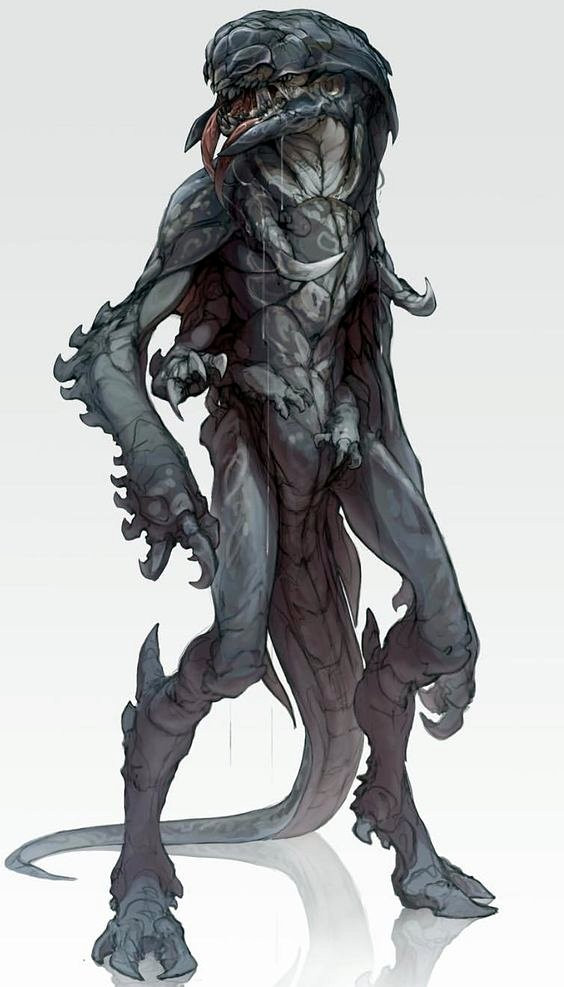Mogontiacum: Difference between revisions
No edit summary |
(→Moguns) |
||
| (4 intermediate revisions by the same user not shown) | |||
| Line 8: | Line 8: | ||
Mogontiacum was an important military town throughout Roman times, probably due to its strategic position at the confluence of the Main and the Rhine. The town of ''Mogontiacum'' grew up between the fort and the river. The ''castrum'' was the base of Legio XIV Gemina and XVI Gallica (AD 9–43), XXII Primigenia, IV Macedonica (43–70), I Adiutrix (70–88), XXI Rapax (70–89), and XIV Gemina (70–92), among others. Mainz was also a base of a Roman river fleet, the ''Classis Germanica''. Remains of Roman troop ships (navis lusoria) and a patrol boat from the late 4th century were discovered in 1982/86 and may now be viewed in the ''Museum für Antike Schifffahrt''. A temple dedicated to Isis Panthea and Magna Mater was discovered in 2000 and is open to the public. The city was the provincial capital of Germania Superior, and had an important funeral monument dedicated to Drusus, to which people made pilgrimages for an annual festival from as far away as Lyon. Among the famous buildings were the largest theater north of the Alps and a bridge across the Rhine. | Mogontiacum was an important military town throughout Roman times, probably due to its strategic position at the confluence of the Main and the Rhine. The town of ''Mogontiacum'' grew up between the fort and the river. The ''castrum'' was the base of Legio XIV Gemina and XVI Gallica (AD 9–43), XXII Primigenia, IV Macedonica (43–70), I Adiutrix (70–88), XXI Rapax (70–89), and XIV Gemina (70–92), among others. Mainz was also a base of a Roman river fleet, the ''Classis Germanica''. Remains of Roman troop ships (navis lusoria) and a patrol boat from the late 4th century were discovered in 1982/86 and may now be viewed in the ''Museum für Antike Schifffahrt''. A temple dedicated to Isis Panthea and Magna Mater was discovered in 2000 and is open to the public. The city was the provincial capital of Germania Superior, and had an important funeral monument dedicated to Drusus, to which people made pilgrimages for an annual festival from as far away as Lyon. Among the famous buildings were the largest theater north of the Alps and a bridge across the Rhine. | ||
---- | |||
<br> | |||
<br> | |||
---- | |||
== '''Climate''' == | |||
Mogontiacum generally features mild summers and mild winters, with a relatively narrow annual temperature range and few extremes of temperature, with temperatures varying between (72 °F) in the warmest month, and above (32 °F) in the coldest month. Rain fall is also moderate, falling regularly and evenly across the seasons. | |||
=== <span style="color:#800000;"> The Fog of Mogontiacum === | |||
At night, regardless of season, a fog rises from the river and falls over the city. For this reason mortals tend to stay indoors and when required to travel at night, they do so in groups for safety. | |||
It is not uncommon for people who travel out-of-doors at night to go missing and many bodies are found floating in the river later. | |||
Sadly, children are the most susceptible to the lure of the fog and for this reason, most children's rooms in Mogontiacum have no windows. | |||
<span style="color:#800000;">It is not well known, but the Children of Caine are no more immune to the fog of Mogontiacum than are mortal children, the younger the child, the more likely they are to go missing and if found at all, usually only a pile of ashes remain. | |||
<span style="color:#800000;">While the fog does limit the supernatural perceptions of the undead in Mogontiacum, it does so for only sight and sound, the olfactory senses of all vampires are heightened to a significant degree and the smell of even the smallest droplet of blood will catch their attention drifting on the formless mists from a considerable distance. | |||
---- | |||
<br> | |||
<br> | |||
---- | |||
== '''Monuments''' == | |||
:* '''[[Drususstein]]''' (Drusus stone) - Drusus' mausoleum | |||
:* ''Jupiter's column'' | |||
:* ''Roman Theater of Mogontiacum'' | |||
:* ''Roman Aqueduct'' | |||
:* ''Weihealtäre Mithraskult'' | |||
---- | |||
<br> | |||
---- | |||
== '''Moguns''' == | |||
[[File:MOGUNS.jpg]] | |||
<br> | |||
<br> | |||
---- | |||
<br> | |||
---- | |||
== '''Wraiths''' == | |||
:Marius & Duilius -- Gate guards | |||
:Camillus -- Runner | |||
:Publius Aquila -- Commander | |||
---- | ---- | ||
<br> | <br> | ||
<br> | <br> | ||
---- | ---- | ||
Latest revision as of 20:32, 14 February 2021
Roman Mogontiacum
The Roman stronghold or castrum Mogontiacum, the precursor to Mainz, was founded by the Roman general Drusus perhaps as early as 13/12 BC. As related by Suetonius the existence of Mogontiacum is well established by four years later (the account of the death and funeral of Nero Claudius Drusus), though several other theories suggest the site may have been established earlier. Although the city is situated opposite the mouth of the Main, the name of Mainz is not from Main, the similarity being perhaps due to diachronic analogy. Main is from Latin Menus, the name the Romans used for the river. Linguistic analysis of the many forms that the name "Mainz" has taken on make it clear that it is a simplification of Mogontiacum. The name appears to be Celtic and ultimately it is. However, it had also become Roman and was selected by them with a special significance. The Roman soldiers defending Gallia had adopted the Gallic god Mogons (Mogounus, Moguns, Mogonino), for the meaning of which etymology offers two basic options: "the great one", similar to Latin magnus, which was used in aggrandizing names such as Alexander magnus, "Alexander the Great" and Pompeius magnus, "Pompey the great", or the god of "might" personified as it appears in young servitors of any type whether of noble or ignoble birth.
Mogontiacum was an important military town throughout Roman times, probably due to its strategic position at the confluence of the Main and the Rhine. The town of Mogontiacum grew up between the fort and the river. The castrum was the base of Legio XIV Gemina and XVI Gallica (AD 9–43), XXII Primigenia, IV Macedonica (43–70), I Adiutrix (70–88), XXI Rapax (70–89), and XIV Gemina (70–92), among others. Mainz was also a base of a Roman river fleet, the Classis Germanica. Remains of Roman troop ships (navis lusoria) and a patrol boat from the late 4th century were discovered in 1982/86 and may now be viewed in the Museum für Antike Schifffahrt. A temple dedicated to Isis Panthea and Magna Mater was discovered in 2000 and is open to the public. The city was the provincial capital of Germania Superior, and had an important funeral monument dedicated to Drusus, to which people made pilgrimages for an annual festival from as far away as Lyon. Among the famous buildings were the largest theater north of the Alps and a bridge across the Rhine.
Climate
Mogontiacum generally features mild summers and mild winters, with a relatively narrow annual temperature range and few extremes of temperature, with temperatures varying between (72 °F) in the warmest month, and above (32 °F) in the coldest month. Rain fall is also moderate, falling regularly and evenly across the seasons.
The Fog of Mogontiacum
At night, regardless of season, a fog rises from the river and falls over the city. For this reason mortals tend to stay indoors and when required to travel at night, they do so in groups for safety.
It is not uncommon for people who travel out-of-doors at night to go missing and many bodies are found floating in the river later.
Sadly, children are the most susceptible to the lure of the fog and for this reason, most children's rooms in Mogontiacum have no windows.
It is not well known, but the Children of Caine are no more immune to the fog of Mogontiacum than are mortal children, the younger the child, the more likely they are to go missing and if found at all, usually only a pile of ashes remain.
While the fog does limit the supernatural perceptions of the undead in Mogontiacum, it does so for only sight and sound, the olfactory senses of all vampires are heightened to a significant degree and the smell of even the smallest droplet of blood will catch their attention drifting on the formless mists from a considerable distance.
Monuments
- Drususstein (Drusus stone) - Drusus' mausoleum
- Jupiter's column
- Roman Theater of Mogontiacum
- Roman Aqueduct
- Weihealtäre Mithraskult
Moguns
Wraiths
- Marius & Duilius -- Gate guards
- Camillus -- Runner
- Publius Aquila -- Commander


